Disclosure: This article contains affiliate links. We may earn a commission from purchases at no extra cost to you, which helps our travel content.
There's something magical about cities in transition—those urban spaces caught between what they were and what they're becoming. Taichung, Taiwan's second-largest city, embodies this beautiful contradiction. While most travelers make a beeline for Taipei's gleaming skyscrapers or Taroko Gorge's dramatic landscapes, I found myself drawn to Taichung's gritty charm and burgeoning creative scene. After three visits to Taiwan, I finally dedicated a full week to exploring this underrated gem last October, wandering through repurposed industrial spaces, vibrant night markets, and alleyways transformed by bold murals. What I discovered was a city reinventing itself through art and design while honoring its industrial roots—a narrative that resonates deeply with my fascination for urban renewal and cultural identity. If you're a student looking to experience Taiwan beyond the obvious tourist trail, Taichung offers an affordable and authentic glimpse into the country's evolving urban landscape.
Rainbow Village: Where Folk Art Saved a Community
My Taichung adventure began where many visitors start—at Rainbow Village (彩虹眷村). But unlike the tour groups who breeze through for quick photos, I arrived early on a Tuesday morning to meet Mr. Huang, the 98-year-old veteran whose spontaneous act of painting saved this former military dependents' village from demolition.
The village isn't what most expect—it's tiny, just a handful of low-lying buildings rather than a sprawling neighborhood. Yet the impact of Huang's colorful folk art is immense. Every surface bursts with whimsical human figures, animals, and abstract patterns in vibrant primary colors. What began as one elderly man's creative pastime evolved into a grassroots preservation movement that eventually gained government protection.
As I chatted with a volunteer guide (many university students help maintain the site), she explained how Rainbow Village represents a larger story about Taiwan's military history and urban development. These humble military dependents' villages once housed Kuomintang soldiers who retreated from mainland China in the late 1940s. Most have been demolished for modern development, making this preserved pocket all the more significant.
The site gets crowded by mid-morning, so I recommend arriving before 9 AM for a more contemplative experience. While there, I used my travel journal to sketch some of Huang's distinctive characters—a meaningful souvenir that didn't cost a thing.

💡 Pro Tips
- Visit Rainbow Village before 9 AM to avoid tour groups and get better photos
- Take time to chat with the student volunteers who can share deeper context about the site's significance
- Consider making a small donation to help with preservation efforts
Calligraphy Greenway: The Urban Art Corridor
If there's one area that captures Taichung's transformation into a cultural hub, it's the Calligraphy Greenway. This 3.6-kilometer urban corridor stretches from the National Museum of Natural Science to the National Taiwan Museum of Fine Arts, creating a green spine through the city center that's become an open-air gallery.
I dedicated an entire day to slowly making my way along this route, which proved to be both a visual feast and a lesson in how thoughtful urban planning can revitalize neighborhoods. The greenway features dozens of public art installations that range from playful sculptures to interactive pieces. My favorite was the 'Sound Cave' near the CMP Block Museum, where the curved metal structure creates fascinating acoustic effects—I spent a good twenty minutes just playing with echoes like an overgrown child.
What makes this area special isn't just the curated art but how it's activated the surrounding neighborhoods. Boutique cafes, independent bookstores, and design shops have sprouted along the greenway's edges. I particularly enjoyed browsing at TADA Bookstore, where the carefully selected titles on art, design, and architecture had me reaching for my packing cube organizer to see if I could somehow fit more books into my already stuffed backpack.
The greenway comes alive in the evening when locals emerge for their post-dinner constitutionals. Students practice dance routines on concrete plazas, elderly couples stroll arm-in-arm, and young professionals walk their impossibly tiny dogs. It's a masterclass in how public space can foster community when done right.

💡 Pro Tips
- Rent a YouBike from numerous stations along the greenway to cover more ground
- Visit the CMP Block Museum of Arts (free entry) for rotating contemporary exhibitions
- Check the greenway events calendar online—there are often weekend performances or markets
Shen Ji New Village: Industrial Heritage Reimagined
My obsession with adaptive reuse projects led me to Shen Ji New Village, a former military dependents' village that's been transformed into a creative hub. Unlike Rainbow Village's preservation approach, Shen Ji embraces contemporary reinvention while honoring its historical bones.
The village consists of simple single-story concrete buildings arranged in a grid—utilitarian structures built in the 1950s to house military families. Today, these modest spaces host artist studios, craft workshops, indie designer boutiques, and some seriously good cafes. The transformation happened organically rather than through top-down planning, giving the area an authentic creative energy that can't be manufactured.
I spent hours wandering the narrow lanes, popping into workshops where artisans practiced traditional crafts with modern twists. At one studio, I watched a young ceramicist creating contemporary pieces inspired by Taiwanese tea culture. At another, a printmaker demonstrated techniques using recycled materials.
The village exemplifies what I love most about Taiwan's approach to heritage—not freezing it in amber but allowing it to evolve with contemporary needs while maintaining a connection to the past. This balance is something Sheffield (my adopted UK home) also strives for with its industrial buildings, though I'd argue Taiwan does it with less self-consciousness and more pragmatic creativity.
Bring your reusable water bottle when exploring Shen Ji, as Taichung's heat can be intense even in autumn. The village has several water refill stations as part of their sustainability initiatives, and you'll want to stay hydrated while exploring every corner of this creative enclave.
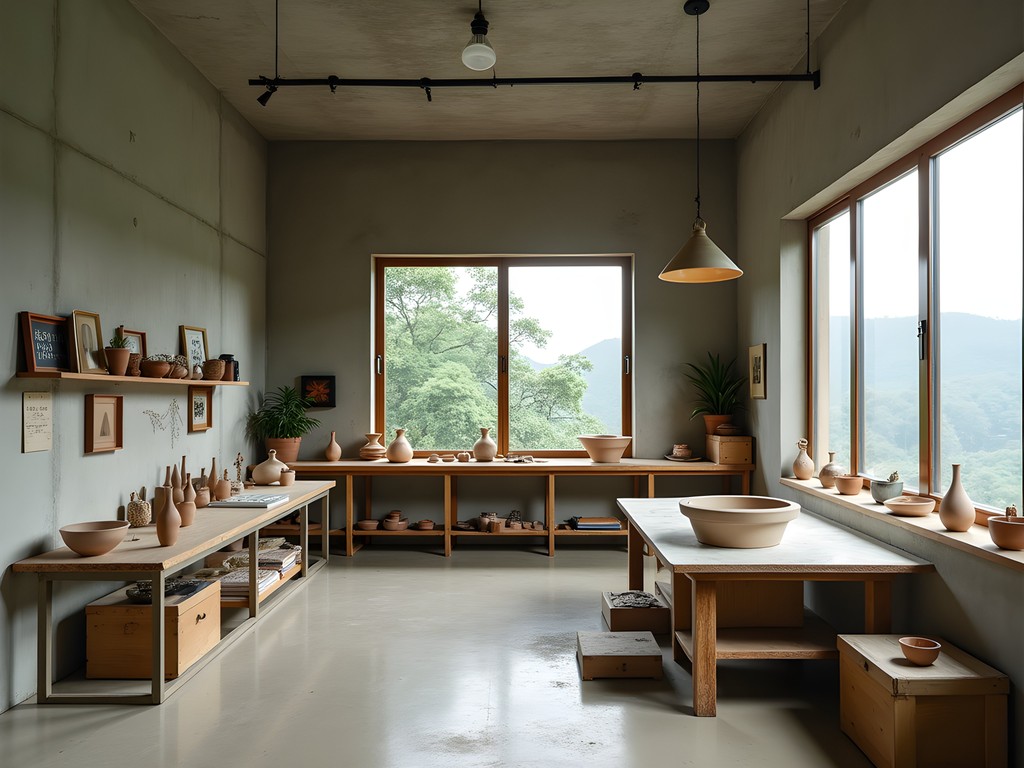
💡 Pro Tips
- Visit on weekday afternoons when artists are most likely to be working in their studios
- Look for workshops offering hands-on experiences—many are affordable and suitable for beginners
- The best coffee in the village is at Fong Da, tucked away in the northeast corner
Taichung's Street Art Revolution
While Taipei might get more international attention for its street art scene, Taichung has quietly developed one of Taiwan's most dynamic mural landscapes. The city's more relaxed attitude toward urban space has allowed street artists to transform entire neighborhoods, particularly in the West District and around the old train station area.
I connected with local artist Wei through Instagram before my trip, and he generously offered to show me some of the city's best pieces and hidden spots. We met at dawn one morning to explore before the heat became unbearable. Armed with my mirrorless camera and comfortable walking shoes, I followed Wei through a labyrinth of back alleys where building owners have increasingly welcomed artists to use their walls as canvases.
"In Taichung, we have more space to experiment," Wei explained as we paused before a massive mural depicting Taiwan's indigenous wildlife blended with urban elements. "The rent is cheaper than Taipei, so more young artists can afford studios here, and the city government has started to see street art as cultural development rather than vandalism."
What struck me most was how the street art in Taichung often engages with local history and social issues rather than just decorative aesthetics. One powerful piece near the former industrial zone commented on Taiwan's transition from manufacturing to technology, showing factory workers morphing into digital avatars. Another celebrated the city's bicycle manufacturing heritage with an intricate mechanical mural that incorporated actual bike parts.
The street art scene here feels less commercialized than in many cities I've visited across Asia and Europe. Artists aren't creating Instagram bait but rather thoughtful commentaries on urban life and Taiwanese identity. For students of art, design, or urban studies, these walls offer a master class in how public art can engage meaningfully with place.

💡 Pro Tips
- Download the free 'Taichung Street Art Map' app which is updated regularly by local artists
- The area around Zhonghua Night Market has some of the highest concentration of quality murals
- Early morning (6-8 AM) offers the best light for photography and fewer obstacles like parked scooters
Cultural Creative Parks: From Factories to Art Spaces
Taiwan has mastered the art of transforming industrial relics into vibrant cultural spaces, and Taichung offers several compelling examples. The Cultural Heritage Park (formerly the Taichung Creative and Cultural Industries Park) and the Shen Ji New Village represent different approaches to adaptive reuse, but both offer fascinating glimpses into how cities can breathe new life into obsolete infrastructure.
The Cultural Heritage Park occupies a former winery and brewery complex from the Japanese colonial period. The red-brick buildings and towering smokestacks create a dramatic backdrop for the contemporary art exhibitions, design markets, and performances now housed within. What impressed me most was how the industrial character wasn't sanitized away—exposed pipes, original machinery, and raw concrete surfaces remain integral to the aesthetic.
On a Wednesday afternoon, I joined a free English-language tour led by architecture students from Tunghai University. They explained how the renovation preserved structural elements while adapting spaces for new uses. In one building, massive fermentation tanks had been converted into intimate screening rooms for experimental films. In another, an old loading dock had become an amphitheater for outdoor performances.
The park hosts regular weekend markets where local designers and craftspeople sell their wares. I spent hours browsing handmade jewelry, upcycled fashion, and artisanal foods, eventually treating myself to a handcrafted leather keychain that the maker tooled with a custom design while I waited. These markets offer students on tight budgets the chance to pick up unique souvenirs directly from creators at reasonable prices.
What makes these creative parks different from similar projects I've seen in Europe is their accessibility. There's no sense of exclusivity or hipster pretension—families with young children, elderly couples, and teenagers all share the space comfortably. It's a reminder that successful urban renewal should serve the entire community, not just a creative class elite.

💡 Pro Tips
- Check the Cultural Heritage Park's event calendar for free workshops and performances
- The weekend designer markets typically run from 11 AM to 5 PM
- Many of the food vendors offer student discounts with valid ID
Student-Friendly Night Markets: Culinary Adventures on a Budget
No exploration of Taiwanese urban culture would be complete without diving into its legendary night markets, and Taichung offers several that won't strain a student budget. While Fengjia Night Market gets the most attention as one of Taiwan's largest, I found the smaller, more local markets offered better value and a more authentic experience.
Zhonghua Night Market became my regular evening haunt, partly for its central location but mostly for its perfect balance of food, games, and atmosphere. Unlike some night markets that have become tourist spectacles, Zhonghua still primarily serves locals, with prices to match. Most dishes cost between NT$30-80 (US$1-3), making it possible to sample widely without spending much.
My strategy was to eat my way through the market methodically over several visits, trying something new each time. Standouts included coffin bread (a Taiwanese take on bread bowls filled with creamy seafood chowder), oyster omelets, and my personal addiction: wheel cakes filled with molten custard. The stinky tofu here is particularly good if you're brave enough to try this polarizing Taiwanese specialty.
What makes Taichung's night markets particularly interesting from an urban space perspective is how they temporarily transform ordinary streets into vibrant social hubs. By day, these are just regular commercial thoroughfares, but come evening, they become pedestrianized wonderlands of light, sound, and smell. It's a masterclass in flexible urban space usage that many Western cities could learn from.
For students on tight budgets, night markets also offer affordable entertainment beyond food. Carnival-style games cost just NT$10-30 per play, and people-watching is entirely free. I spent one entire evening sitting at a tiny plastic table with a bubble tea, watching an elderly man absolutely dominate a basketball shooting game, much to the delight of the growing crowd of spectators.

💡 Pro Tips
- Zhonghua Night Market is less crowded on weeknights, particularly Monday through Wednesday
- Bring small denominations of cash—most vendors don't accept cards
- Look for stalls with lines of locals—that's usually where you'll find the best food
Final Thoughts
As my week in Taichung drew to a close, I found myself reluctant to leave this city that balances so effortlessly on the edge of transformation. Unlike Taipei's polished cosmopolitanism or Tainan's preserved traditionalism, Taichung exists in that fascinating liminal space between what was and what will be—a city actively reimagining itself through creative expression while honoring its industrial and military past. For students seeking an authentic Taiwanese experience that won't devastate your bank account, Taichung offers that rare combination of affordability, accessibility, and cultural depth. The city's approach to urban renewal through art and adaptive reuse provides valuable lessons for how communities can evolve without erasing their heritage. So next time you're planning a Taiwan trip, don't just pass through Taichung on your way somewhere else—give it the time it deserves to reveal its layered personality and creative spirit. This underrated gem might just become your favorite Taiwanese city, as it has become mine.
✨ Key Takeaways
- Taichung offers an authentic glimpse into Taiwan's evolving urban landscape at budget-friendly prices
- The city's approach to adaptive reuse transforms industrial and military spaces into vibrant cultural hubs
- Visiting in autumn provides ideal weather for exploring the outdoor street art and creative parks
- Student travelers can experience Taiwan's cultural depth without the higher costs of Taipei
📋 Practical Information
Best Time to Visit
September to November (fall)
Budget Estimate
$30-50 USD per day for students (accommodation, food, transport, and activities)
Recommended Duration
5-7 days
Difficulty Level
Easy
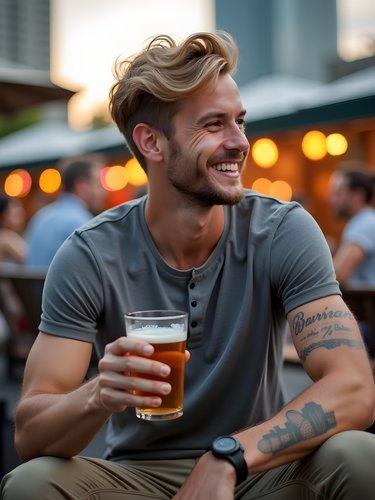
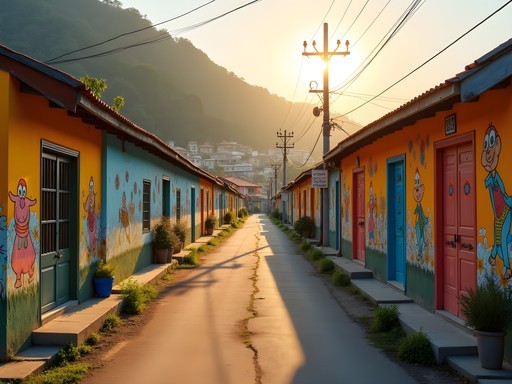

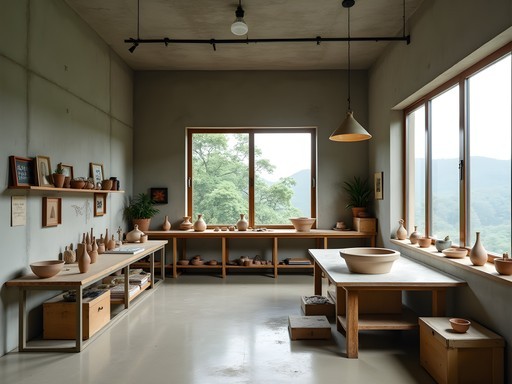
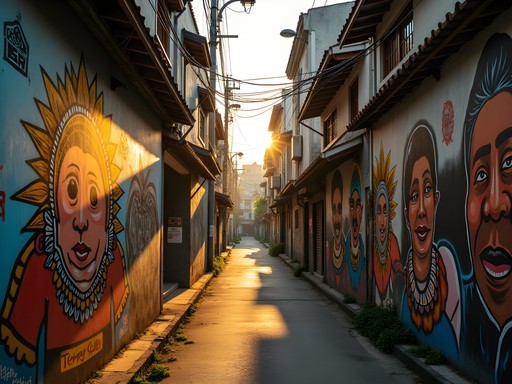
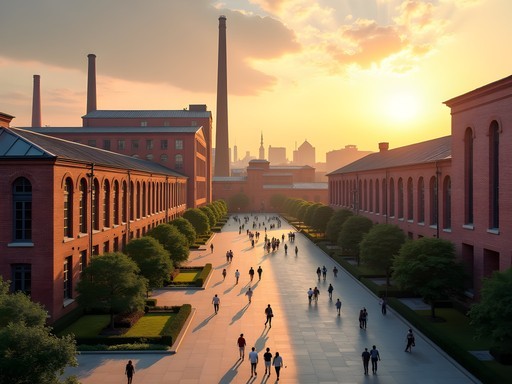
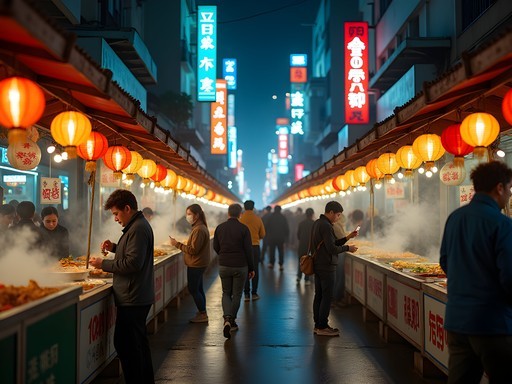









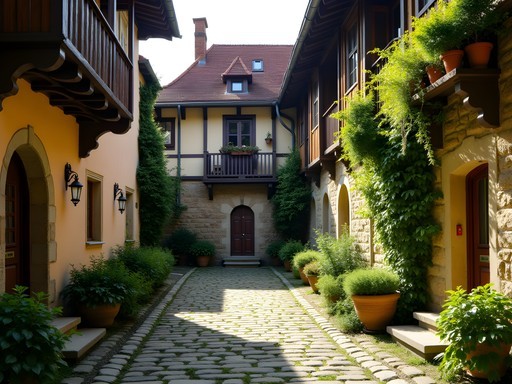
Comments
cityhero
Been to all these spots. Shen Ji New Village was my favorite - way less touristy than Rainbow Village.
skyqueen
Just got back from Taichung and used this guide - it was spot on! Pro tip for anyone going: the light at Rainbow Village is gorgeous around 4pm, but Calligraphy Greenway is better in the morning. Also found this amazing bubble tea place near Shen Ji New Village called Chun Shui Tang that claims to have invented bubble tea. Worth the stop after all that walking!
backpack_wanderer
Adding this to my bucket list! 🎨
artlover442
That shot of the mural with the old man and the bird is stunning! Who's the artist?
Jerry Kelley
That's by local artist Chen Wei-Ming. He does a lot of pieces combining traditional Taiwanese imagery with modern street art techniques. There's actually a small gallery featuring more of his work near the Calligraphy Greenway.
taiwantraveler88
If you're visiting Shen Ji New Village, don't miss the little coffee shop called Fong Da. Amazing local beans and the owner can tell you stories about how the neighborhood has changed. Also, there's a night market nearby that's way less touristy than the ones in Taipei!
skyone
Love seeing Taichung getting the attention it deserves! I've been living in Taiwan for 3 years and Taichung has the best balance of urban amenities without Taipei's crowds and prices. The street art scene keeps evolving too - there's a new mural project that just launched in the West District that's not mentioned here. Worth checking out if you visit in the next few months!
Jean Wells
Jerry, your piece captures Taichung's essence beautifully. Having lived in East Asia for 15+ years, I've observed Taiwan's cultural evolution closely. What distinguishes Taichung's art scene from similar movements in Kaohsiung or even parts of Japan is the grassroots preservation ethos. The Shen Ji New Village transformation particularly resonates - it mirrors successful industrial repurposing projects I've documented throughout Asia, but with distinctly Taiwanese characteristics. The balance between preservation and innovation feels more organic here than in more deliberately curated spaces. For visitors, I suggest exploring the periphery of these areas too; some of the most authentic expressions exist just beyond the recognized art districts where gentrification hasn't fully taken hold.
travelmate
Just booked my trip to Taiwan for November and Taichung is now definitely on my itinerary thanks to this post! Can't wait to explore Rainbow Village and the Calligraphy Greenway! Does anyone know if there are any special art festivals happening in November? Would love to time my visit with a local event if possible!
Nicole Russell
You're in luck! The Taichung Street Art Festival usually happens in mid-November. They bring in artists from all over Asia and you can watch them creating new murals in real-time. The exact dates change each year, but worth checking the Taichung Cultural Bureau website closer to your trip!
cityadventurer
OMG I'm so glad I found this post!! I've been to Taipei like 3 times but never made it to Taichung. Those Rainbow Village photos are INCREDIBLE! Adding this to my Taiwan itinerary for December. Did you feel safe walking around these areas as a solo traveler?
Jerry Kelley
Absolutely safe! Taiwan in general is incredibly safe, but Taichung specifically felt very comfortable at all hours. The art districts are well-populated and well-lit at night.
happyace
How many days would you recommend for Taichung if I'm mainly interested in the art scene? Is it doable as a day trip from Taipei or should I stay overnight?
Jerry Kelley
Definitely stay at least 2-3 nights! There's way too much to see in a day trip, plus the night markets are amazing. The high-speed rail from Taipei makes it easy to reach, but you'll want time to explore properly.
Venture X
Premium card with 2X miles, $300 travel credit, Priority Pass